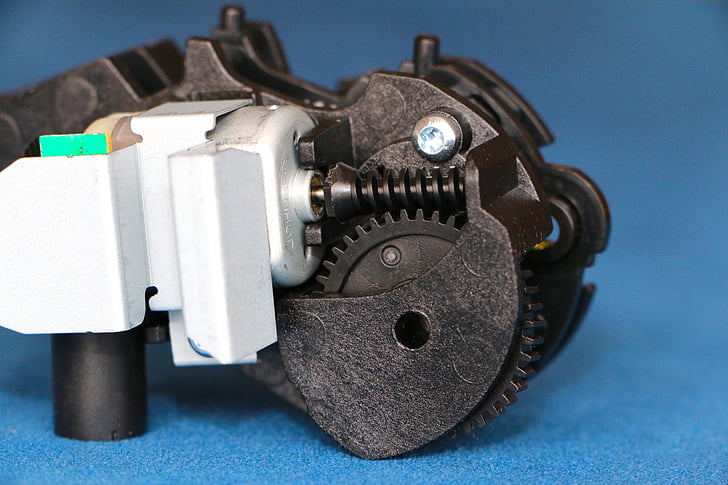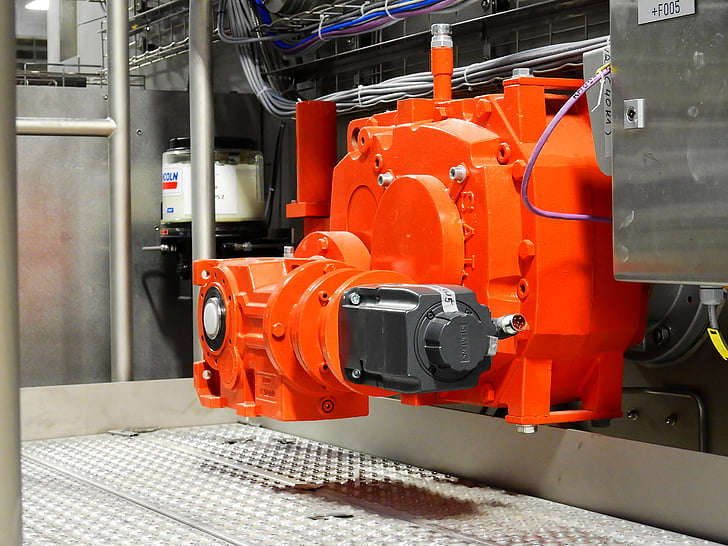Among a large number of green energy sources and environmental protection products, rare earth permanent magnet motors become favored by different fields. Brought up in all key development strategies, energy conservation, and emission reduction have become important development strategies for countries and enterprises in recent years. In general, in all aspects of the new type of motor performance of the rare earth permanent magnet motor has been largely improved in comparison with a traditional motor.

Introduction to rare-earth permanent magnetic materials
Rare-earth permanent magnetic material is a special magnetic material made up of rare-earth elements and transition metals. The most common rare earth elements include neodymium (Nd), praseodymium (Pr), samarium (Sm), etc, while transition metals are normally used as iron (Fe). The advantages of a rare-earth permanent magnetic material compared to traditional magnetic materials are as follows:
High coercive force: Rare earth permanent magnetic materials possess high coercive force; therefore, the motor can work with high magnetic field strength, hence increasing its output power.
High remanent magnetism: the rare earth permanent magnetic material has high remanent magnetism. Even in the event of power failure, a certain magnetic field could be maintained to improve the efficiency of the motor.
High magnetic energy product: The magnetic energy product of rare earth permanent magnet material is high. Under the same volume, more magnetic energy can be stored, and the torque output of the motor can be larger.
Corrosion resistance: The corrosion resistance of rare earth permanent magnet material is good, and it can work for a long time in bad environments to extend the service life of the motor.
Compact size: The usage of rare earth permanent magnetic material at comparable and higher energy densities than conventional magnetic material makes smaller, lighter motors possible in many applications.
These advantages make their use very extensive in motor products. Rare earth permanent magnet materials have especially turned high-performance motors into ones that are considered a good enough choice for good performance.
Energy Efficiency Improvements
Enhanced Magnetic Properties and Efficiency
Permanent magnet motors made of rare earth elements mark a new frontier in the efficiency of energy conversion. Applications based on these motors are way more energy efficient compared to other applications. This is majorly due to the strong magnetic field that the rare-earth permanent magnet creates which generates better efficiency in the electrical-to-mechanical energy conversion. For instance, the properties of rare-earth material have greatly featured in this efficient storage and release of magnetic energy due to the coercivity, remanence magnetism enhanced, and greater magnetic energy product.
Highly Efficient Energy Consumption and Low Energy Loss
One of the prime characteristic features of the motors comprised of rare earth permanent magnets is their highly efficient usage in consumption with very low loss of energy. This has been occasioned by several factors: These materials in this group possess high coercivity and remanence and are referred to as rare-earth permanent magnet materials. Coercivity represents the resistance of a magnetic material, whereas permanent magnetism indicates the amount of remaining magnetism after the removal of an externally applied magnetic field. These characteristics allow motors to take even more optimal advantage of the magnetic field for better energy storage and subsequent energy release to greatly heighten overall efficiency.
Advanced Aerodynamic Design
The second reason is the advanced aerodynamic design which reduces the losses of friction and wind resistance mechanically. In that respect, friction and air drag are decreased by optimization to reduce energy losses as heat, increases efficiency. Rare earth permanent magnet motors also reduce energy consumption by reducing copper wiring and the core losses of the motor. Copper wire losses, or I²R losses, are due to the resistance of the wire, while core losses occur due to the alternating magnetic fields in the motor core. These losses are reduced by the motors so that more amount of electrical energy gets converted into useful mechanical work.
Material Optimization and Structural Improvements
The main strategy adopted for rare-earth permanent magnet motors includes material optimization, structure optimization, and control system development to achieve significant increases in energy conversion efficiency. Materials selection is of prime importance; for instance, neodymium and samarium are very rarely available and provide magnetic properties that no other conventional material does. These are carefully selected and treated to realize full magnetic potential and ensure durability for long service.
Innovative Structural Design
The other area where efficiency gains are realized is in the structural design of rare-earth permanent magnet motors. The engineers work at minimizing losses through innovative design approaches. For example, the rotor and stator design are optimized to reduce the leakage of magnetic flux twhich mostlyleads to energy loss in conventional motors. Precise alignment of the magnetic elements within the motor ensures that the magnetic fields employed are those that guarantee high efficiency.
Advanced Control Systems
Another important aspect that contributes to the energy efficiency of such motors is related to the performance of the control system. Advanced algorithms in control are developed to dynamically manage the operation of the motor and ensure that it operates with optimum efficiency under a wide range of load conditions. These can adjust the motor’s speed and torque in real-time, reducing energy consumption when demand is low and giving maximum output at the appropriate time. These are integrated with sensors and feedback mechanisms to enable accurate monitoring and adjustment, hence increasing its efficiency.
Significance and Future Development
Rare earth permanent magnet motors become one of the key technologies in the energy-saving field since they possess the advantages of high energy efficiency and low loss. With the further strengthening of global energy-saving awareness and environmental protection, such motors are finding increasing importance. They are sustainable because they save energy and the quantity of greenhouse gas emissions produced by the generation of electricity. The rate of rare earth permanent magnet motors’ application grows faster due to their superior performance and ecological compatibility compared to the traditional ones.
Motor Industry Innovation
In the motor industry, rare earth permanent magnet motors are a benchmark for innovation and development. From industrial machinery and automotive to renewable energy technologies like wind turbines and electric vehicles, they find their place. Improved efficiency not only secures energy savings but further increases the performance and reliability of the systems they provide power for.
Ongoing Research and Development
The extensive use of permanent magnet motors of rare earth has contributed to further research and development into motor technologies. Researchers are continuously studying ways of improving magnetic properties in the development and design of more efficient motors that are smart in their control systems. Continuous innovation in these areas yields even more advanced and efficient motor technologies beyond what may exist at the moment.
Conclusion
In the end, rare earth permanent magnet motors can improve energy conversion efficiency with high magnetic properties, advanced design, and intelligent control systems. The highly effective energy consumption and low loss make it a cornerstone technology for energy conservation. In the context of the world’s determination to move toward greener energy, the adoption and development of rare earth permanent magnet motors will be crucial in reaching these goals.
Increased power density
The power density of the rare-earth permanent magnet motors is higher than that of conventional motors. That is, the same volume or mass allows rare-earth permanent magnet motors to provide higher output power.
High coercivity and remanent magnetism of rare-earth permanent magnetic materials can provide stronger magnetic fields with smaller sizes. Rare-earth permanent magnet motors can thus be miniaturized through size reduction while maintaining the same output power. The high coercivity and remanent magnetism of the rare-earth permanent magnet motor can also reduce the size of the core of the motor and reduce its weight, enabling lightweight.
Permanent magnet rare-earth motors are also accompanied by the most advanced design in electromagnetic systems and optimization in mechanical structure for high performance in the small size. It is also capable of meeting a high efficiency and output power at increased motor speed with the rise in power density. In this context, rare-earth permanent magnet motors could only further increase power density with the help of an efficient cooling system and reduction of losses.
High-power density in rare earth permanent magnet motors is mainly based on miniaturization, lightweight, and high performance. Optimization of material properties, better design, and enhanced manufacturing processes allow rare-earth permanent magnet motors to achieve higher output power for the same volume or mass, hence meeting the growing demand for high-power density applications.

Environment Adaptability
The high-temperature stability of rare earth permanent magnet materials is the key to achieving high-temperature operation. Rare earth permanent magnet materials have a high Curie temperature, which can maintain a high magnetic field strength at higher temperatures. In addition, some rare earth elements such as neodymium and promethium also have good high-temperature stability and oxidation resistance, which can prevent the material from oxidizing and demagnetizing at high temperatures. This allows rare earth permanent magnet motors to maintain high output power and efficiency in high-temperature environments.
Rare earth permanent magnet materials also have good corrosion resistance. In special working environments, motors may be affected by corrosive factors such as acid, alkali, salt spray, etc., which may lead to degradation or damage to motor performance. Rare earth permanent magnet materials have good corrosion resistance and can resist the impact of some common corrosive factors on the motor, to ensure the reliability and stability of the motor in harsh environments.
Environmental sustainability
Rare earth permanent magnet motors are important for environmental friendliness. The high efficiency of rare earth permanent magnet motors reduces energy consumption and carbon emissions. Compared to conventional induction or excitation synchronous motors, rare-earth permanent magnet motors have a higher efficiency for the same output power. This means that rare-earth permanent magnet motors require less energy under the same operating conditions, reducing dependence on fossil fuels and associated carbon emissions.
Rare-earth permanent magnet motors can also facilitate the utilization of renewable energy sources. With the rapid development of renewable energy sources such as wind and solar, rare earth permanent magnet motors have become a key driver for these sources.